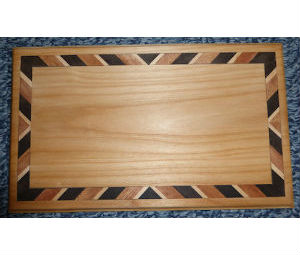
Drilling Techniques
“Drilling Tips to Avoid Tearout” Bradpoint bits & Blue Tape. I recently built some new shop furniture with drawers, and I wanted to make sure the handles went on without

“Drilling Tips to Avoid Tearout” Bradpoint bits & Blue Tape. I recently built some new shop furniture with drawers, and I wanted to make sure the handles went on without

“Cut Tight to the Waste Side” Create the perfect shape by cutting outside the line. In order to ensure a perfectly cut piece for a fit or design when using

“An Inlay for the Top” Creating an Inlay with Exotic Wood Pieces. I recently took some time off to learn some new techniques. I discovered I really enjoy doing marquetry.

“Veneering without a Vacuum Press” Beautifully Figured Bubinga on MDF. I’ve been trying some new woodworking techniques lately and veneering was on the list. Unlike the inlay/marquetry, I’m not sure

It was a long November with lots of travel and family activities so no posts. From 1 – 21 Dec

About 10 days ago, I started building two boxes. One is cherry with a maple and purple heart inlay, and

Over the past couple of weeks, I built this perfectly-sized storage cabinet using knotty alder. It has tongue and groove
Sign up to be notified of local craft events where I’ll be present, special prices for gift items, or discounts on large furniture projects.